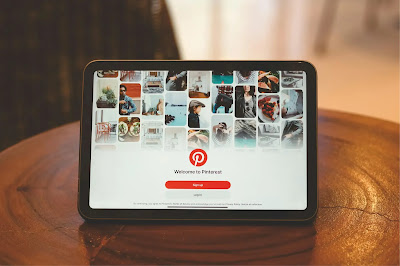Pinterest can be thought of as a platform fused with a visually-inspired search engine where users can discover and organize their ideas about anything from home decor and fashion to recipe inspiration and health tips. Established in 2010, Pinterest grew to be a global search-and-discovery utility with an array of content that reaches a broad spectrum of interests and types of audience. With its emphasis on imagery, Pinterest allows its users to create collections, or "boards," onto which they can "pin" pictures, or "pins," that they find desirable or useful. Below are key aspects of what makes Pinterest innovative and how it is being used today.
The Heart of Pinterest: Discovery and Inspiration
Pinterest is unique because it works more like a visual search engine and not a social network as with many other sites. Pinterest helps users to check if they have been tweeted by any of their friends but works as a platform through which the user can discover new ideas, products, and trends based on their interest. Moreover, users can search for inspiration on any topic, trending ideas, and save them as pins to boards organized under user-managed or theme-specific boards. Discovery has instead been the core approach of Pinterest, positioning itself away from networks such as Instagram or Facebook, which primarily focus on community interaction and participation.
How Pinterest Works: Pins, Boards, and Algorithms
Pinterest lets users create boards categorized under divergent themes, where users can save or "pin" images and links they find either on Pinterest itself or anywhere else across the internet. Thus each pin can be updated to point towards some external website, restricting the users on their search for products, articles, and tutorials. Through this means, Pinterest affords great utility for shopping inspiration and brand discovery as users have frequently pursued Pinterest for the planning of purchases or projects.
The algorithm of Pinterest shapes the overall user experience. Through personalization, Pinterest customizes its suggestions based on users' previous pins, search histories, and interests. This allows for a highly curated experience, as users are constantly exposed to content likely to attract their attention.
Pinterest: A Platform for E-Commerce and Brand Marketing
For brands, Pinterest provides powerful tools to reach audiences, primarily interested in products or lifestyle ideas. With many Pinterest users already inclined to buy or plan what products to buy, brands have such an opportune moment to show what they have to offer through visually compelling pins.
Pinterest has incorporated several features to accommodate e-commerce:
Buyable Pins: This feature allows users to buy products directly on the platform.
Shop the Look: This feature tags multiple products in a single pin, allowing users to click on any of them and make purchases.
Pinterest Ads and Promoted Pins: Brands can pay to have their pins seen by a wider audience or target audience, directly allowing them to reach potential customers in specific demographic groups or with particular interests.
Use of Pinterest by Content Creators and Influencers
By incorporating images linked to their content on Pinterest, bloggers, influencers, and content creators can generate amazing traffic to their websites. Unlike traditional social media posts whose lifespan is relatively short, pins on Pinterest are highly searchable, and due to evergreen content, they can generate visits and engender engagement long after their posting.
Pinterest Trends and Analytics
Besides all this, Pinterest also renders insights and analytics, which aid businesses and creators in recognizing user trends. The Pinterest Trends tool makes it easier for users to identify trending topics and content under set categories. This tool is decidedly beneficial to brands tailoring their content strategies since they can optimally pin the content around trending keywords.
Pinterest SEO: Optimizing pins for discovery
Pinterest operates a lot like a search engine, and this is why SEO is important for getting the most visibility on Pinterest. Optimization for pinning would include:
Use of keywords: Incorporate keywords in the descriptions, titles, and board names to help Pinterest rightly index the content.
Quality images: Pinterest is more visually oriented, thus, generally those with high quality and vertical images (with a 2:3 aspect ratio) work better in grabbing attention.
Adding alt text and detailed descriptions: The more explainable the descriptions and the coherent keywords make sure you can practically appear in search results.
Pinterest Community Standards and Initiatives for Inclusiveness
With being known for its extensive anti-hate policies, Pinterest has a content moderation team that shapes an inclusive community state. Recently, they launched efforts toward inclusivity, such as the advent of skin tone filters in beauty search engines and a Creator Fund in support of underrepresented communities.
Pinterest’s Role in the Social Media Landscape
Pinterest is mainstreaming to be invented for this space due to pushing inspirations and discovery rather than any traditional networking. Pinterest is not only a supporter of e-commerce with over 450 million active users, but also an alternative platform for creators and brand marketers to work on visual encoder and inspiration with audiences.
With an emphasis on enabling users to discover and plan everything, even home projects to fashion choices, Pinterest has become indispensable for millions, positioned more as an idea hub for creativity, inspiration, and meaningful interactions than just a social-media platform. Pinterest thus remains the necessary tool in the hands of those wanting to inspire or be inspired even as innovations in features and algorithms continue.





